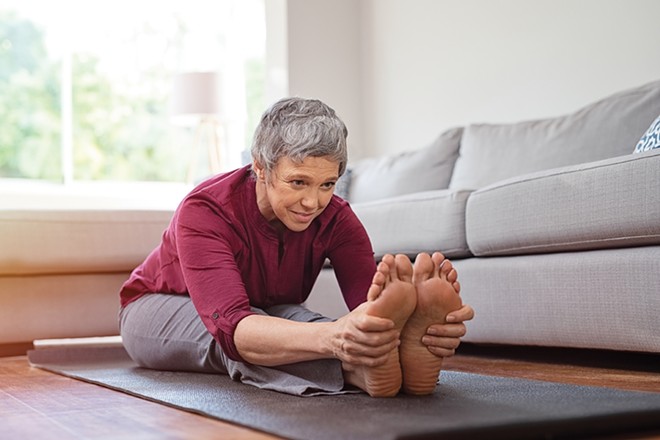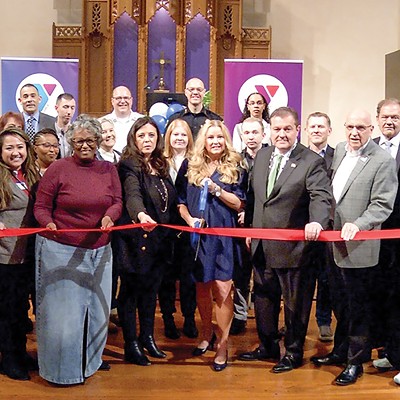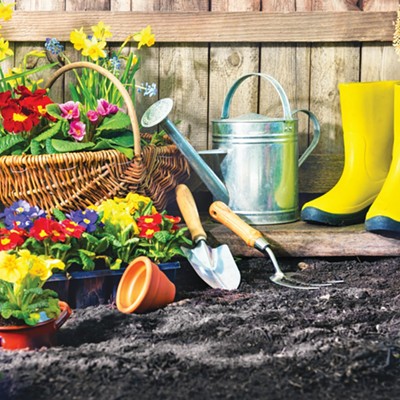When you think about health and fitness, your feet may not be the first thing that comes to mind. But, the condition of your feet and ankles has a big impact on mobility and wellness. Except for the hand, no other part of the body has as many moving parts as the foot, which has 28 bones (including the two small sesamoids), 33 joints and over 100 ligaments. However, the foot takes a constant beating, in contrast to the hand.
Dr. John Sigle of Springfield is a podiatrist who founded the Foot and Ankle Center of Illinois in 2011. Sigle says seniors are prone to foot injuries, and weight gain is often a contributing factor. Injuries are largely due to wear and tear over years of walking, running and constant pressure on the feet. Every step exerts four times your body weight of pressure on your ankle. The more extra weight you carry, the harder it is on your feet and ankles. Shoes are also an issue. Sigle emphasizes that people who stay active as they age are less prone to foot and ankle problems.
Some of the most common foot and ankle issues in seniors are arthritis, tendonitis and plantar fasciitis (chronic heel pain). Midfoot arthritis occurs when ligaments and joints sag, causing cartilage erosion. Pain is better managed when you keep moving. Hammertoes result when the arch sags and tendons stay tight, causing the toe to flex downward. Bunions are also common. There is a misconception that wearing certain types of shoes causes bunions, but most bunions are due to genetics.
1) Eat a nutritious diet and exercise regularly.
Those who exercise regularly are less prone to foot and ankle injuries. Wear and tear on joints lead to injury, and wear and tear are directly related to weight gain. The first priority for good foot and ankle health is maintaining a healthy weight and remaining active. Sigle says that here in the Midwest people like their corn, starches and meat; consequently, our population tends to have a lot of weight gain. A nutritious diet is the foundation for good health, including healthy feet and ankles.
2) Stretch before and after exercise.
Individuals who don't take time to warm up before exercising are much more likely to injure their feet and ankles. Stretching before and after exercise helps to avoid strain on muscles, tendons and joints and to prevent injuries. Stretching exercises should take 5-10 minutes. Stretch, hold and relax; avoid bouncing or pulling. Examples of simple, effective exercises to stretch the calf, hamstring and lower back muscles can be found at https://www.myfootandanklecenter.com/articles/general/514940-stretching.
3) Wear a good, supportive shoe that fits properly.
Women have often worn the smallest, tightest and narrowest shoes possible over many years. As people age, ligaments in the foot lengthen, the arch collapses and the length and width of the foot expands. Some people continue to wear the same-sized shoe that they always wore, rather than making an adjustment as the size of their foot expands. There should be a thumb's width between the toe and end of the shoe.
Sigle recommends a good, supportive, softer shoe, often with a simple orthotic. He says cheap shoes often don't have the support that is needed. With cheap shoes, you get what you pay for. More expensive shoes last longer, have better support and can help prevent injury. Athletic shoes are designed for specific types of activities, and good athletic shoes are worth the investment.
4) Practice good foot hygiene and take care of your toenails.
Toenails should be trimmed straight across. Many people neglect their toenails, since toes are hard to reach as people gain weight and become less mobile and flexible. Lack of regular maintenance of toenails leads to injury and strife, such as fungal issues. The risk for fungal infections increases as you age, as nails become more brittle.
Wash your feet daily with soap, including between the toes, and dry thoroughly. Fungus likes a damp environment, and areas around and under toenails provide a breeding ground, especially when wearing damp socks. Fungus can establish under the outermost edge of the toenail and then grow under the nail. It can be spread when you walk barefoot through damp spaces like a locker room or pool. Yellowing or browning of the nail, thickening, crumbling at the edges and odor are characteristics of fungal infections.
5) Seek treatment and get help early.
Sigle advises people to seek treatment when they first experience pain or start to develop an issue. Often there are simple treatments that can help relieve the pain, make you feel better and prevent more serious injuries. Unfortunately, lots of people try to work it out on their own when first developing a problem, which leads to further injuries that are harder to treat later.
Regular maintenance of toenails can prevent problems, and fungal issues treated early are easier to cure. Noninvasive or minimally invasive procedures may be effective when problems are identified early. Hammertoes can often be treated in the office through a simple procedure that releases the tendon and relieves a lot of the symptoms. Bunions can also be treated, and the earlier the issue is evaluated, the better the opportunity to fix the problem.
"The longer a problem exists, the harder it is to treat," says Sigle.




























